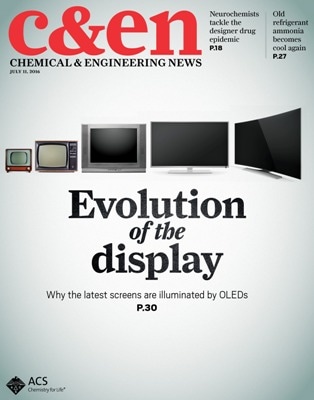Jul 14 2016
These days, it seems like gadgets are constantly improving, and now the next big development may be organic light-emitting diodes, or OLEDs. The technology promises to improve your phones’ quality, durability and even foldability. An article in Chemical & Engineering News (C&EN), the weekly newsmagazine of the American Chemical Society, takes a look at the market for this technology and why it is expected to more than double by 2020.

Jean-François Tremblay, a senior correspondent at C&EN, reports that while OLED displays are just now entering the market, their popularity is growing rapidly due to their sharp picture quality. In a liquid crystal display (LCD) — OLED’s biggest competitor — images are created by a backlight that must send light through several layers of filters. Conversely, OLED displays are much simpler and thinner, using only pixels to emit the red, green and blue lights needed for an image. Because this newer technology is lighter and more flexible, it could make phone screens shatterproof or even foldable. Apple is already looking at investing billions of dollars into OLED technology for future iPhone models.
Now, manufacturers are looking to go even bigger, by creating OLED displays for the TV market. But several challenges must be overcome before the industry can commercialize the technology on a large scale. OLED displays are susceptible to image retention, which is when the ghost of a previous image won’t go away. This makes them a poor fit for TVs. They’re also very expensive. However, if researchers can resolve these problems, then OLED displays could vastly improve image quality and open up new possibilities for electronics design — including TVs that can roll up.